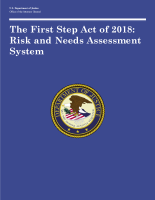Crime risk factors
Narratives of Childhood Adversity and Adolescent Misconduct as Precursors to Violent Extremism - A Life-Course Criminological Approach
Utility of the Static-99 and Static-99R With Latino Sex Offenders
Going Home (or Not): How Residential Change Might Help Former Offenders Stay Out of Prison - NIJ Research for the Real World Seminar
The "Real World" of Dating Violence in Adolescence and Young Adulthood - A Longitudinal Portrait
Pathways Between Child Maltreatment and Adult Criminal Involvement
Less Prison, More Police, Less Crime: How Criminology Can Save the States from Bankruptcy
Professor Lawrence Sherman explains how policing can prevent far more crimes than prison per dollar spent. His analysis of the cost-effectiveness of prison compared to policing suggests that states can cut their total budgets for justice and reduce crime by reallocating their spending on crime: less prison, more police.
See the YouTube Terms of Service and Google Privacy Policy
The First Step Act of 2018: Risk and Needs Assessment System
Stakeholder Statements Submitted in Response to NIJs First Step Act Listening Sessions
Person or Place? A Contextual, Event History Analysis of Homicide Victimization Risk
Pathways to Desistance
Innovative Research Partnerships: Building a Risk Assessment Tool for the N.H. Bureau of Elderly and Adult Services
Evaluation of the Implementation of the Sex Offender Treatment Intervention and Progress Scale (SOTIPS)
Exploring Elder Financial Exploitation Victimization: Identifying Unique Risk Profiles and Factors To Enhance Detection, Prevention and Intervention
Police Officer Crimes and Police Integrity
However, in some cases, at times due to the stressors of the job and frequent exposure to trauma and violence, officers engage in misconduct or criminal behavior. The National Institute of Justice understands what’s at stake for public safety and officer wellness when we ignore warning signs of officers struggling with occupational hazards and other psychological hardships.
See the YouTube Terms of Service and Google Privacy Policy


